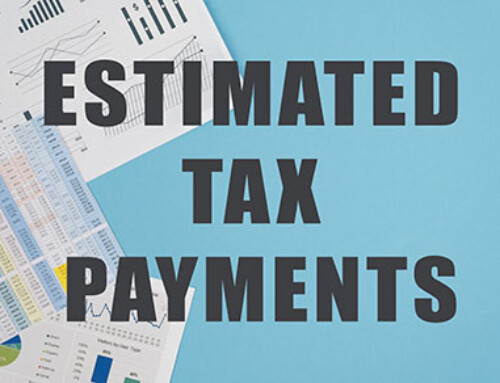With 2024 right around the corner, your shareholders might be thinking about year-end bonuses or distributions. Before doing so, it’s important to review the potential tax implications and requirements.
Distributions vs. Bonuses
S corporations don’t pay income tax at the entity level. Rather, income, gains, losses and deductions generally pass through to the shareholders who report the items on their individual tax returns. As such, S corporations must determine the most tax-favorable way to share gains — as distributions or bonuses. In general, distributions usually are preferable to bonuses. Here’s an overview of the tax treatment of these two options.
- Bonuses. The IRS considers bonuses to be supplemental wages, which are subject to federal payroll taxes. These include 6.2% for Social Security tax, 1.45% for Medicare tax and 6% for federal unemployment tax. In addition, the IRS requires the employer to withhold taxes, at rates as high as 37% for the portions of bonuses that exceed $1 million.
Moreover, bonuses can reduce a shareholder’s qualified business income (QBI) deduction. The QBI deduction generally equals 20% of a shareholder’s portion of the S corporation’s QBI. Wages are deductible, so they reduce an S corporation’s QBI and, in turn, reduce the shareholders’ QBI deduction. The deduction also is subject to wage limitations that begin to phase in with taxable income exceeding $364,200 for joint filers and $182,100 for other filers. This provides another reason to minimize shareholders’ wages.
- Distributions. S corporation shareholders can take distributions tax-free, as long as a distribution doesn’t exceed the shareholder’s stock basis in the company. Distributions in excess of a shareholder’s basis are taxed at long-term capital gains rates (generally, 15% or 20% depending on the shareholder’s income).
Reasonable Compensation Requirement
But it’s not as simple as just deciding to label end-of-the-year payouts as “distributions.” Under IRS rules, S corporations must pay shareholder-employees reasonable compensation for their services before they can make non-wage distributions to such shareholders. If they don’t, these distributions will be treated as wages for tax purposes.
Several court rulings support the authority of the IRS to reclassify other forms of payments to shareholder-employees as wages subject to employment taxes. Should reclassification occur, the shareholder would be on the hook for back payroll taxes, interest and penalties.
According to the IRS, the key to establishing reasonable compensation is determining what a particular shareholder did for the business by looking to the source of the S corporation’s gross receipts, including:
- Shareholder services,
- Non-shareholder employee services, and
- Capital and equipment.
To the extent that gross receipts come from the services of non-shareholder employees and/or capital and equipment, payments to the shareholder are properly treated as non-wage distributions.
On the other hand, to the extent gross receipts are generated directly by the shareholder-employee, payments to that individual should be classified as wages. The shareholder-employee also should be subject to wage treatment for administrative work performed by that individual for other income-producing employees or assets. So, while shareholder-managers might not directly generate gross receipts, they do help other employees or assets that do produce gross receipts.
Compensation Reviews
To avoid year-end distributions being recharacterized as wages, S corporations should review the compensation of shareholder-employees and ensure it’s reasonable. The IRS has identified several factors relevant to the determination of reasonable compensation, including:
- The shareholder-employee’s training and experience,
- Duties and responsibilities,
- Time and effort devoted to the business,
- Dividend history,
- Payments to non-shareholder employees,
- Timing and manner of paying bonuses to key people,
- Compensation for similar services at comparable businesses, and
- Compensation agreements.
Documentation is critical if shareholder compensation falls into IRS crosshairs. Supporting documentation can include data from the U.S. Bureau of Labor Statistics, compensation surveys from trade associations or professional recruiters, competitors’ job listings and minutes from the meetings of your compensation committee or another governing body.
Survey or similar data alone won’t prove your case, though. You should adjust those figures to reflect certain factors, such as:
- The company’s age,
- Size of the company,
- Geographic location,
- The state of the economy, and
- The company’s financial performance.
Be sure to document how these factors have affected compensation decisions. For example, it would likely be understandable for start-ups to compensate shareholder-employees at a lower rate.
Potential Pitfalls
It’s worth emphasizing that the question of what constitutes reasonable compensation is a matter of individual facts and circumstances — there’s no one-size-fits-all answer. Nonetheless, S corporations sometimes get tripped up by relying on simplified formulas for determining reasonable compensation. Common examples include:
- The 60/40 rule (treating 60% of compensation as wages and 40% as distributions),
- The 50/50 rule, and
- Calculating wages as one-third of the company’s taxable income.
None of these formulas have been approved by the IRS. That’s not surprising, as none of them account for such factors as the shareholder-employee’s experience and job duties or the company’s age and profitability.
Get It Right
The unintended consequences of year-end payments can prove costly to the unaware. Before you pay out distributions or bonuses, contact us to ensure that you cover your bases with the IRS.






